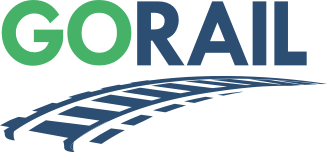Washington, D.C. — Automated Track Inspection (ATI) technologies enable railroads to inspect hundreds of thousands of track miles each year, and to do it with greater accuracy, consistency, and frequency than visual inspections. Despite the safety advantages of ATI, the U.S. Federal Railroad Administration (FRA) has impeded its advancement by denying or delaying several test programs underway at different railroads. FRA should modernize its approach to ATI and similar technologies that provide greater safety for railroad workers and the public.
Here’s a breakdown of the technology, its benefits, and how railroads are trying to implement it across the nationwide rail network.
How does it work? ATI technologies use lasers and cameras mounted onto locomotives and rail cars to inspect track as a train moves across the network, with the advantage of measuring track performance under the force of a loaded train. The data is then collected and analyzed by employees who can schedule necessary maintenance. ATI enables railroads to inspect hundreds of thousands of track miles each year, and to do it with more accuracy, consistency, and frequency than visual inspections.
The current (50-year-old) approach: Railroads are required to perform visual track inspections—an FRA regulation that has been in place for over 50 years (since 1971) despite countless advances in rail technology. Visual inspections involve a track inspector, either on foot or in a truck called a hi-rail vehicle, looking at railroad tracks and using handheld measuring tools.
What change are railroads seeking? In the era of self-driving trucks and drone delivery, railroads want to expand their testing and use of ATI in combination with reduced visual inspections. Class I railroads began requesting permission from the FRA to implement these test programs on certain routes in 2018 and railroads including BNSF, Norfolk Southern, CSX, Union Pacific, Canadian Pacific, and Canadian National received approvals. The results from these programs showed a reduction in geometry defects on main track and other positive safety improvements. In some instances, there have been over 90% fewer unprotected defects that require remedial actions under FRA regulations.
How to describe the benefits? Let me count the ways: ATI’s promising outcomes have wide-ranging potential, from 1) speeding up safety and reliability of inspections to 2) safeguarding employees to 3) improving rail network efficiency and capacity. This technology helps detect track defects with more accuracy, consistency and frequency than do visual inspections, leading to faster remediation. The speed and reliability of ATI reduces the need for visual track inspections that can halt or slow traffic, improving throughput and leading to fewer blocked crossings. ATI also means that track inspectors have less exposure to risk. FRA data shows that reportable accidents involving hi-rail vehicles occur regularly, specifically at highway-rail grade crossings with motor vehicles.
Delay and deny: Unfortunately, the FRA is currently blocking the expansion of ATI. In 2021 and this year, the agency let one test program expire, delayed another request to move to the next test phase, and even denied a request to continue an expired program and a request to expand on an existing waiver. These matters are currently pending.
Bottom line: Data demonstrate that ATI, in combination with reduced visual track inspections, increases rail safety while also reducing delays and enhancing the ability of railroads to meet supply chain demands. FRA should modernize its approach to regulations on ATI and other technologies that enhance safety and productivity on the rail network.
Further reading: Issue Brief: Automated Track Inspections


